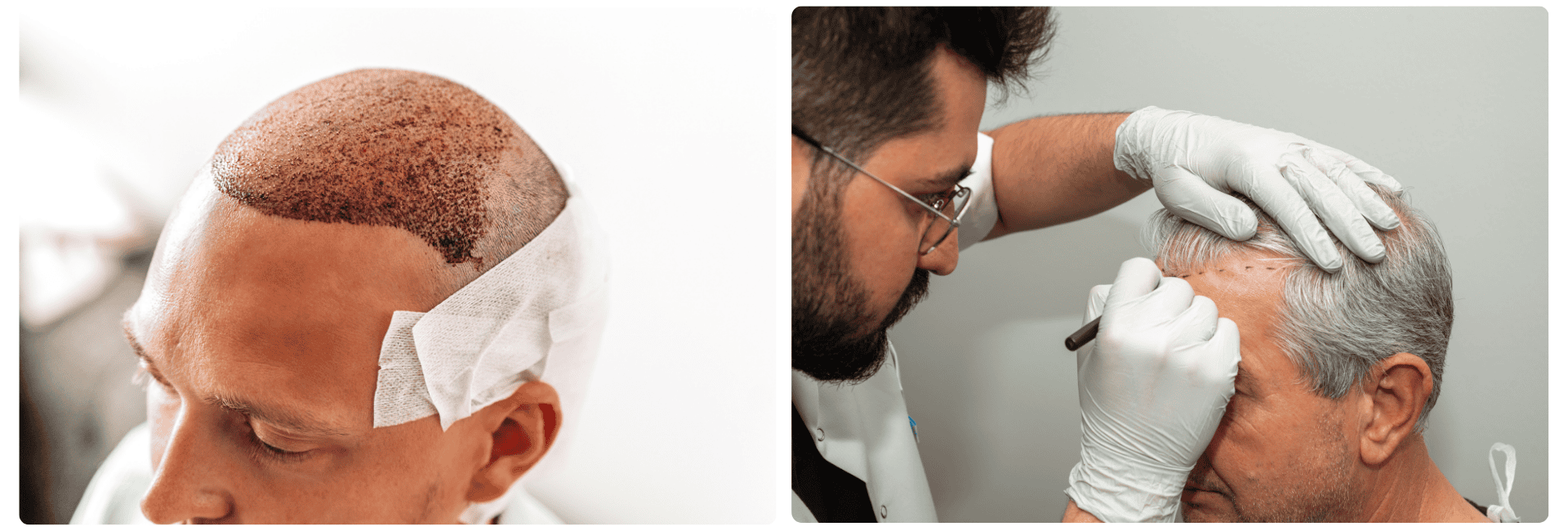
Exploring the true cost of hair transplantation
In recent years, hair transplantation has emerged as a viable solution for individuals grappling with hair loss. While the procedure offers a promising way to restore confidence and self-esteem, understanding its true cost is essential before making a decision. Beyond the monetary expenses, various factors contribute to the overall cost of hair transplantation.
Type of procedure
- Follicular Unit Transplantation (FUT): This traditional method involves harvesting a strip of scalp from the donor area and dissecting it into individual follicular units for transplantation. FUT generally tends to be more affordable than its counterpart due to its less intricate nature.
- Follicular Unit Extraction (FUE): FUE involves extracting individual hair follicles directly from the donor area using a micro-punch tool. Although less invasive and leaving minimal scarring, FUE typically commands a higher price tag due to its labor-intensive nature.
Clinic reputation and expertise
The reputation and expertise of the clinic and surgeon play a pivotal role in determining the cost. Highly experienced surgeons and reputable clinics often charge more for their services. However, opting for a renowned clinic ensures quality results and reduces the risk of complications.
Extent of hair loss
The extent of hair loss directly influences the number of grafts required for transplantation. Individuals with extensive baldness may require multiple sessions or a higher number of grafts, thereby increasing the overall cost.
Geographic location
The geographical location of the clinic significantly impacts the cost of hair transplantation. Clinics situated in metropolitan areas or regions with a higher cost of living generally charge more for their services compared to those in rural areas.
Additional costs
- Pre-operative consultation: Initial consultations with the surgeon to assess candidacy and discuss expectations may incur separate charges.
- Medication and aftercare: Prescription medications, post-operative care products, and follow-up appointments contribute to the overall expenditure.
- Travel and accommodation: For individuals traveling from afar to undergo the procedure, expenses related to travel and accommodation should be factored into the total cost.
Long-term considerations
While the upfront cost of hair transplantation may seem significant, it's crucial to consider the long-term benefits that extend far beyond the initial investment. Unlike temporary solutions like medications or topical treatments, a successful hair transplant offers permanent results, making it a cost-effective investment in the long run.
A. Lifelong solution: Hair transplantation, when performed by a skilled surgeon, offers a permanent solution to hair loss. The transplanted hair follicles continue to grow naturally in their new location, ensuring a lifelong improvement in hair density and appearance. This permanence eliminates the need for ongoing expenses associated with temporary remedies, such as regular purchases of medications or treatments.
B. Psychological well-being: Beyond the financial aspect, the long-term psychological benefits of hair transplantation cannot be overstated. For many individuals, hair loss can significantly impact self-confidence and emotional well-being. By restoring a fuller head of hair, a successful transplant can alleviate feelings of self-consciousness and enhance overall quality of life. The long-lasting boost in self-esteem is invaluable and contributes positively to various aspects of personal and professional life.
C. Reduced maintenance costs: Unlike alternative treatments that require continuous use of medications or special shampoos, a hair transplant simplifies maintenance routines. Once the transplanted hair follicles have established themselves, they require no additional upkeep beyond regular hair care practices. This reduction in ongoing maintenance costs translates to long-term savings and convenience for individuals who opt for hair transplantation.
D. Cost-effectiveness over time: While the initial cost of a hair transplant may seem higher compared to other treatment options, its long-term cost-effectiveness becomes apparent when considering the cumulative expenses of temporary solutions. Over time, the recurring costs associated with medications, topical treatments, and concealers can surpass the one-time investment in a hair transplant. Additionally, the enduring nature of the results ensures that individuals achieve lasting value for their money.
E. Enhanced quality of life: Beyond financial considerations, the long-term benefits of hair transplantation significantly improve the overall quality of life. Restoring a natural, youthful hairline can positively impact social interactions, relationships, and career prospects. The newfound confidence and improved self-image fostered by a successful hair transplant extend far beyond monetary value, enriching every aspect of daily life.

Hair Transplant costs around the world
Hair transplant costs can vary significantly depending on the country and region where the procedure is performed. Below is a comparison of prices in 20 different countries, converted into US dollars (USD) for clarity:
- United States: $4,000 - $15,000 USD
- United Kingdom: £4,000 - £10,000 GBP (approx. $5,300 - $13,200 USD)
- Canada: $4,000 - $12,000 CAD (approx. $3,100 - $9,400 USD)
- Australia: $5,000 - $15,000 AUD (approx. $3,700 - $11,000 USD)
- Germany: €3,000 - €10,000 EUR (approx. $3,400 - $11,100 USD)
- France: €3,000 - €9,000 EUR (approx. $3,400 - $10,000 USD)
- Brazil: R$10,000 - R$30,000 BRL (approx. $1,900 - $5,700 USD)
- Mexico: $40,000 - $100,000 MXN (approx. $2,000 - $5,000 USD)
- Japan: ¥300,000 - ¥1,000,000 JPY (approx. $2,700 - $9,100 USD)
- South Korea: ₩3,000,000 - ₩10,000,000 KRW (approx. $2,600 - $8,500 USD)
- India: ₹50,000 - ₹300,000 INR (approx. $700 - $4,000 USD)
- South Africa: R20,000 - R80,000 ZAR (approx. $1,300 - $5,100 USD)
- UAE (Dubai): 10,000 - 40,000 AED (approx. $2,700 - $10,900 USD)
- Saudi Arabia: 10,000 - 40,000 SAR (approx. $2,700 - $10,700 USD)
- Russia: 100,000 - 500,000 RUB (approx. $1,400 - $6,800 USD)
- China: ¥20,000 - ¥80,000 CNY (approx. $3,100 - $12,500 USD)
- Spain: €3,000 - €8,000 EUR (approx. $3,400 - $8,900 USD)
- Italy: €3,000 - €10,000 EUR (approx. $3,400 - $11,100 USD)
- Netherlands: €3,000 - €8,000 EUR (approx. $3,400 - $8,900 USD)
- Switzerland: CHF 5,000 - CHF 20,000 (approx. $5,400 - $21,800 USD)
These prices are approximate and can vary based on factors such as the surgeon's experience, the number of grafts needed, and the clinic's reputation and location within each country. It's important to research thoroughly and consult with qualified professionals before undergoing a hair transplant procedure.
Conclusion
The cost of hair transplantation varies depending on several factors, including the type of procedure, clinic reputation, extent of hair loss, geographical location, and additional expenses. While affordability is undoubtedly a consideration, prioritizing the expertise of the surgeon and the quality of care provided is paramount. Ultimately, a comprehensive understanding of the costs involved, coupled with realistic expectations, empowers individuals to make informed decisions regarding hair transplantation.


